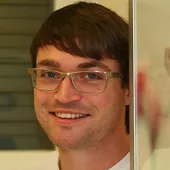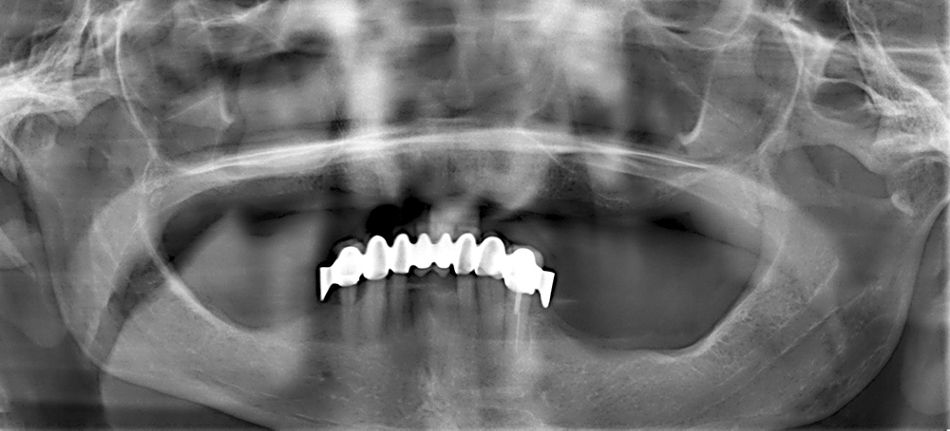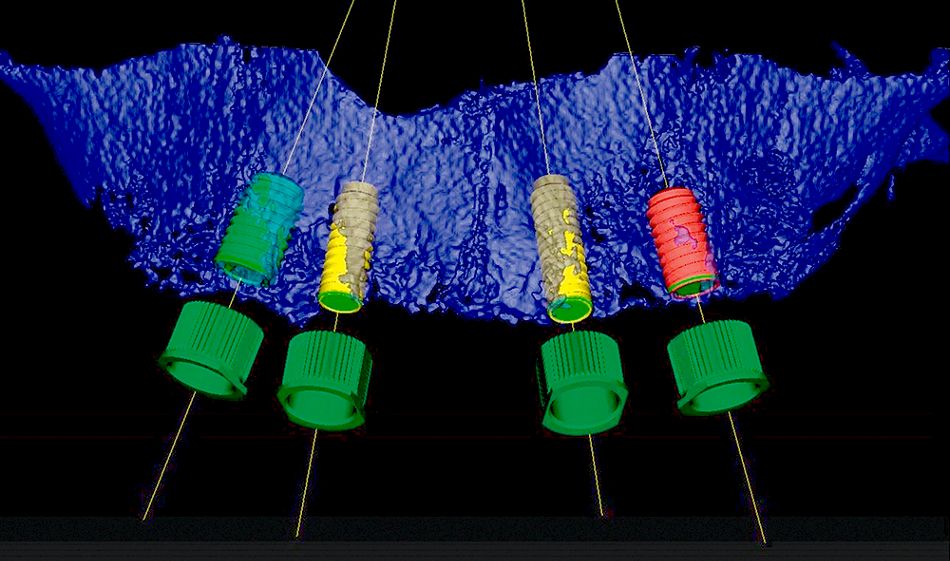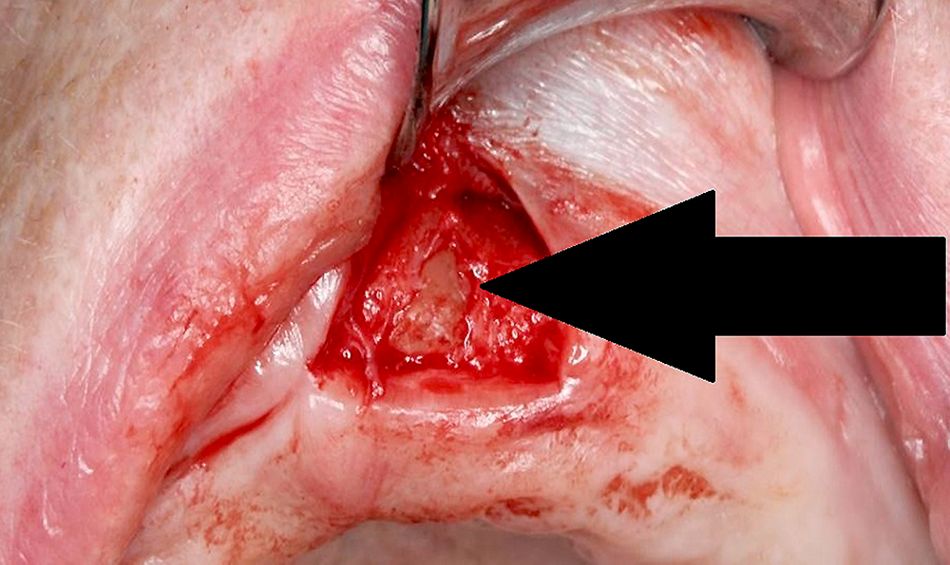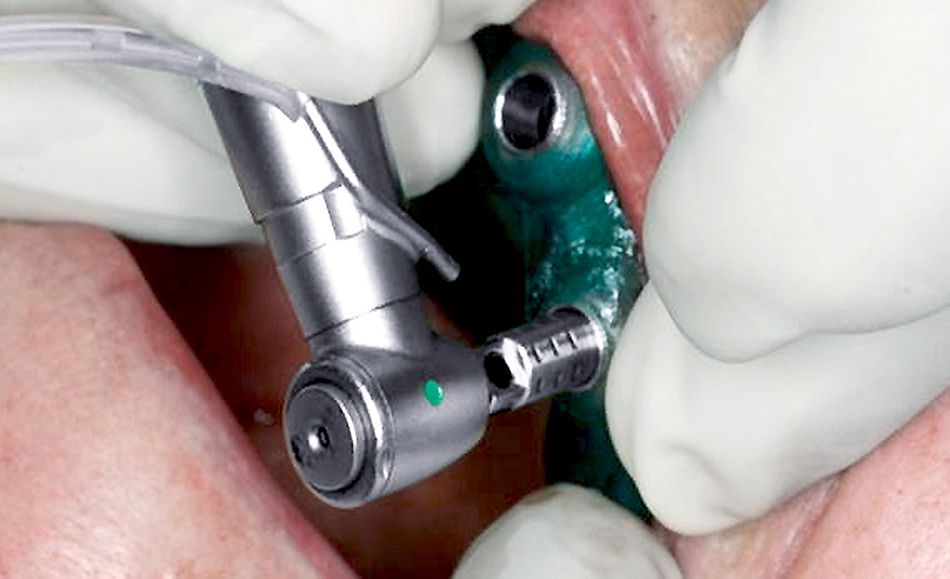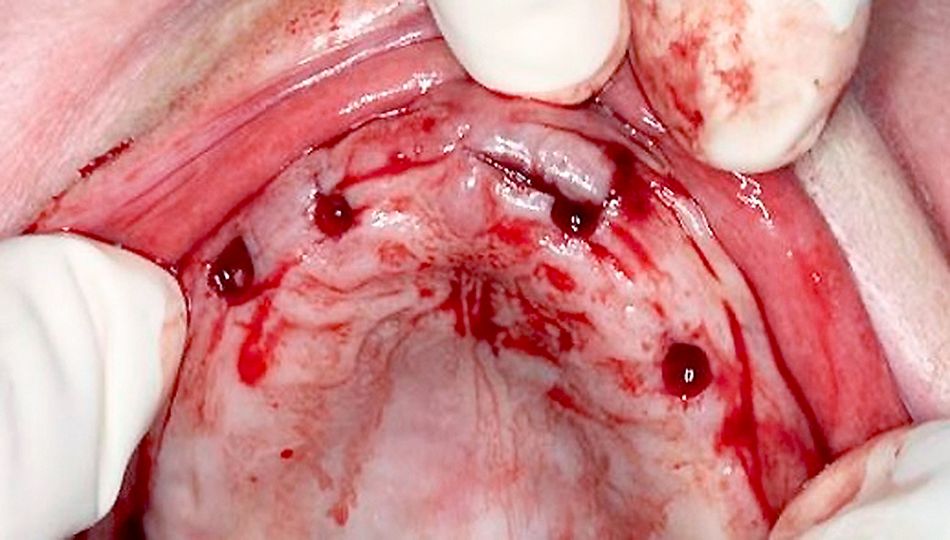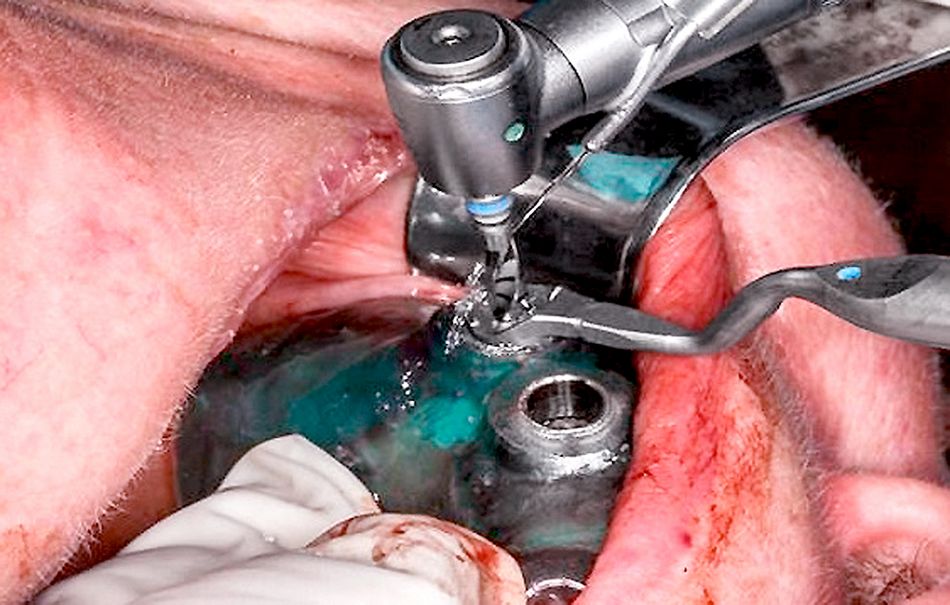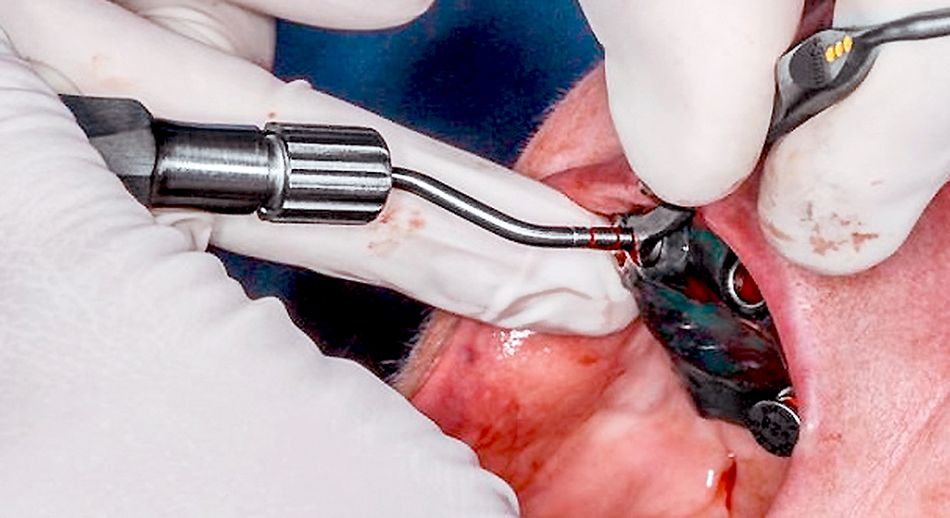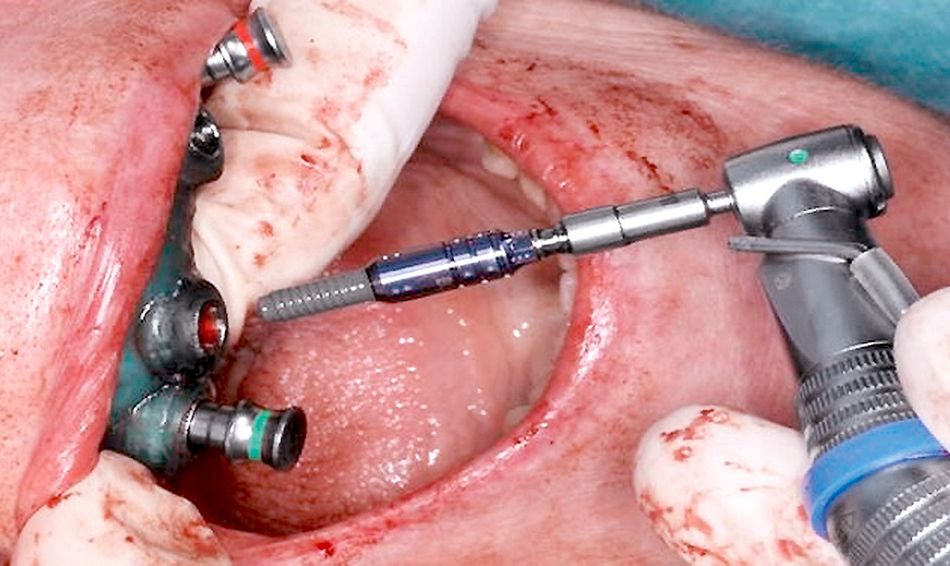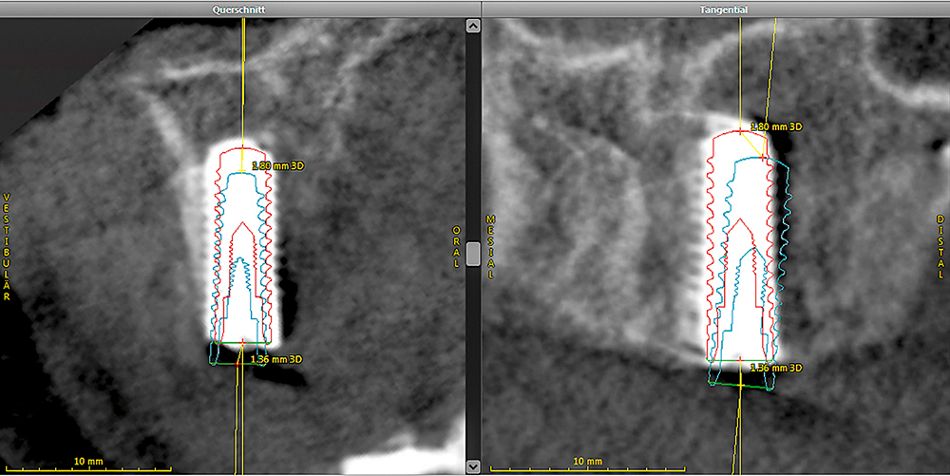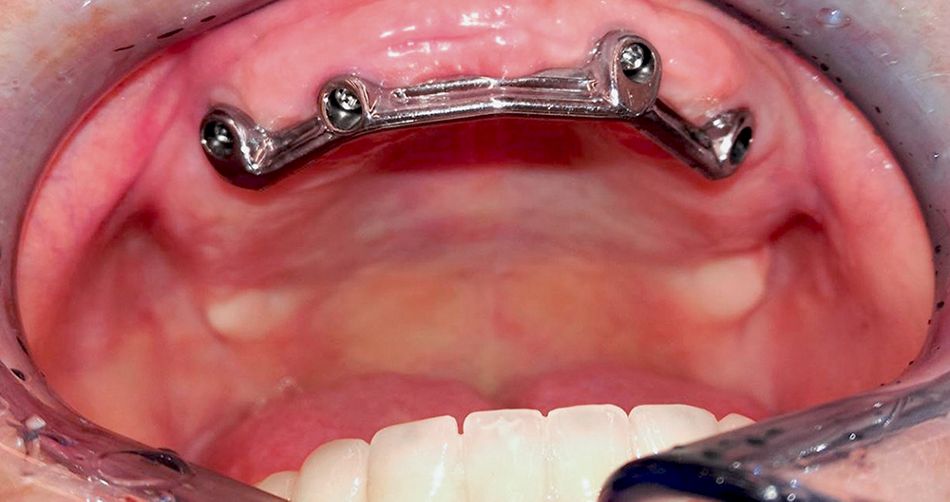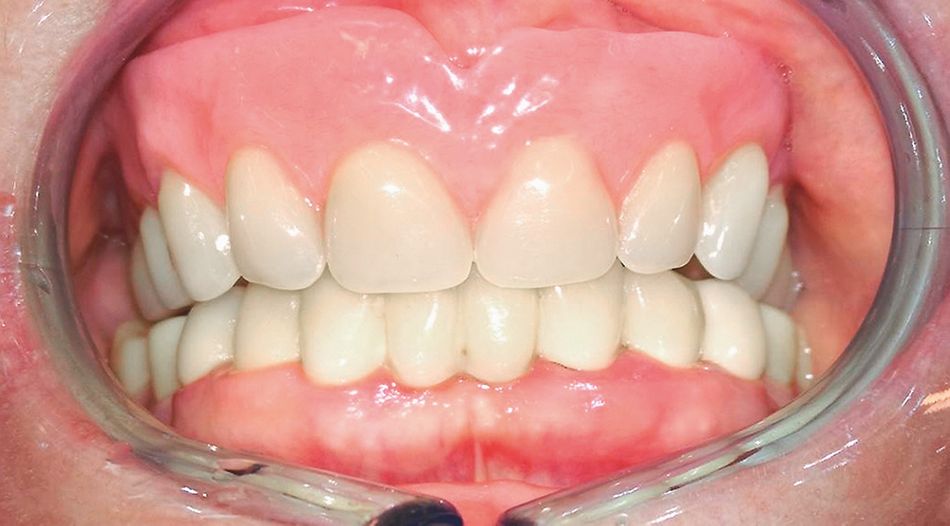This female patient with an edentulous maxilla presented at the Dental Clinic of the DPU in Krems, Austria, in January 2014 requesting implant provision. After a comprehensive history was taken and her dental situation assessed (maxilla complete denture, mandible front tooth bridge from 34-44 and model cast with Preci attachments), the general conditions for her management were analyzed during the initial visit. She declined any form of bone augmentation and very specifically requested a solution similar to that for her mandible (Preci attachment).
Treatment planning
The patient opted for a complete maxillary denture supported by Dolder bars and 4 implants in the area 14, 12, 22, 24 (Straumann® Bone Level Roxolid® Implant). A drill template that allows fully guided implant insertion is required for optimal utilization of the existing bone stock. In a backward planning process, after DVT images were recorded the maximum possible angulation between implants and abutments was calculated. At the same time, the removal of a previously undiscovered root remnant in the area of 21 was planned. This had remained undetected to date due to the spinal overlap on the OPG (Fig. 1).
Surgical procedure
The printed drill template (BEGO) was prepared on the basis of the DVT findings, digital 3D planning of the implants (coDiagnostixTM) (Fig. 2) and digitalization of the plaster models, and the guide sleeves were polymerized in the template (Fig. 3). The root remnants were removed (Fig. 4), the gingiva was blanked off (Fig. 5) and the mucosal fragments removed (Fig. 6). The respective implant bed was then prepared and the drill template adjusted with fixing pins. In order to ensure the primary stability of the implants, and after lateral bone condensation through the guide sleeves with osteotomes (Fig. 7), the implant bed was prepared up to the planned implant diameter (Fig. 8). Tapping was deliberately avoided in this case in order to optimize stability. Following the guided insertion of the implants (Fig. 9), the flaps were closed and 1.5% chlorhexidine-digluconate gel was applied. The extraction site was managed with two interrupted sutures. At the follow-up visit after 10 days, both the extraction site and all 4 gingival incisions had healed satisfactorily.
